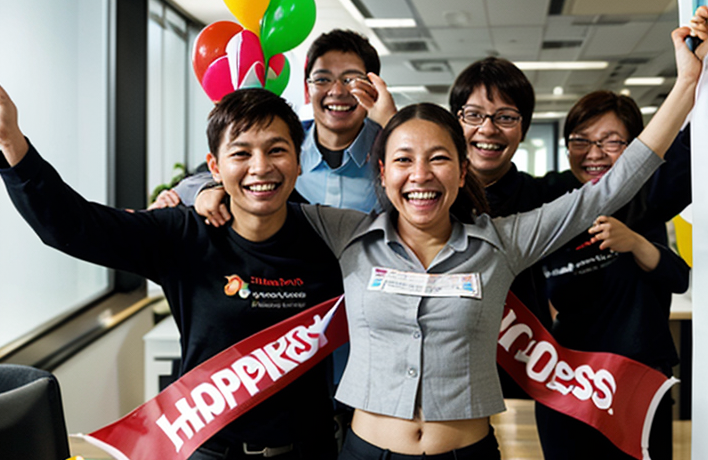How Human Resources Can Be Developed
Investing in human resources is very important for organizations. Companies need skilled workers. Well-trained employees are adaptable. You see, a workforce that learns is a workforce that grows. For example, Google understands this.
Are You a Good Fit for This Job?
They invest in their staff. This creates innovation and satisfaction. Such practices improve their performance. Companies like Google boost employee morale and retention. Businesses benefit from less turnover. Less turnover means saved costs.
Employees stay when they feel valued. Strong teams arise in supportive environments. High productivity links directly to training. Companies with strong HR development excel. They outperform those who neglect their workforce.
Strong HR practices create a culture of learning. It fosters creativity and problem-solving skills. Each employee feels more engaged in their work. This can lead to amazing new ideas. More ideas can transform the market.
- Training programs
- Mentorship schemes
- Feedback mechanisms
These strategies have proven successful. They build stronger workplaces. When employees feel heard, they invest in the company. This is the secret to longevity.
Companies that continue to develop their staff survive tough times. This shows how much HR development matters. Adaptation leads to growth. A good example is Starbucks. They prioritize their team.
By fostering strong HR practices, they raise satisfaction levels among employees. Their commitment goes beyond coffee; it builds community. Happy baristas serve better coffee!
When leaders focus on HR, they show trust. Trust leads to loyalty. Loyalty creates brand advocates in the workforce. Employees who love their jobs foster strong relationships with customers.
Research shows a well-developed workforce shines in the market. Companies that invest reap huge rewards. It’s not just about training alone; it’s about a comprehensive approach.
For organizations aiming to enhance their overall performance, understanding the role of human resources is crucial.
Thus, investing in human resource development is a must today. Modern organizations for thrive through talent. Without HR focus, businesses lag behind. The market has no place for complacency.
For more insights on the evolution and significance of HR strategies in today’s workplace, consider exploring the importance of HR evolution and how it shapes organizational success.
It is clear that developing talent creates a more adaptable workforce. HR development can influence a company’s future. A smart approach makes all the difference. So, what will you invest in today?
Case Study: A Company That Excels

One shining example is Google. Their HR development strategies are famous worldwide. They prioritize employee learning and growth. Investing in training programs pays dividends. In 2020, Google introduced a program called “Career Guru.” Employees connect with mentors for guidance.
This initiative improved employee morale, as workers felt more valued. The program increased overall job satisfaction. About 85% of participants reported feeling more engaged thanks to this program. That’s a significant number!
In terms of skill development, Google invests heavily in workshops. Employees learn coding, project management, and communication skills. In 2021, over 70% of employees attended at least one workshop. Remarkably, this led to a 20% boost in productivity.
According to the Employee Engagement Index, Google consistently ranks in the top five companies. Various reasons exist for this success.
Work From Anywhere Opportunities:
- Flexible work hours enhance work-life balance.
- Annual retreats bond teams and boost camaraderie.
- Generous benefits ensure employees feel secure.
These strategies align with the Maslow’s Hierarchy of Needs. They address basic to advanced employee needs. Employees at Google have their physiological and social needs met. This solid foundation allows them to grow.
Another key element is transparency in communication. Management regularly shares company goals. This transparency fosters trust and loyalty. Employees understand their role in achieving these goals.
Furthermore, they measure success through detailed surveys and analytics. Feedback helps refine their HR programs. According to data, turnover rates dropped by 15% since these strategies began. It has also attracted top talent.
Competitors look to Google’s model for their HR development plans. These tactics yield remarkable outcomes. Checklist for success includes: effective training, positive culture, and clear communication. Google serves as a remarkable case study. They show the impact of well-developed human resources.
Innovative HR Development Strategies
In the heart of an organization, human resources pulse with possibility. They drive growth and innovation. Mentorship programs stand out. These initiatives pair experienced employees with newcomers.
- Mentorship Programs: They foster guidance and support.
- Training Initiatives: These programs focus on skills development.
- Technological Innovations: Tools like AI make training smart and engaging.
Each approach nurtures talent organically. Autonomy blooms as employees gain confidence. At XYZ Corp., mentoring became a culture. Staff set targets, achieved them together. This practice led to a 20% raise in productivity. New employees thrived. They felt valued, supported in their journeys.
Training initiatives can take many forms. Workshops inspire teamwork and creativity. Technology opens doors, providing resources. Videos, online courses, and simulations make learning active. Innovations include gamified learning. Employees compete, laugh, and learn at the same time!
These strategies empower workers with knowledge and skills. They gain a sense of purpose. Meanwhile, organizations evolve with every learning experience. They adapt to changing market needs continuously. Measurable outcomes reveal hidden gems. Companies can study progress to refine methods used.
Each step forward boosts employee satisfaction. Happy employees stay longer, reducing turnover. Thus, a fulfilling career begins right within these innovative frameworks. How do we build momentum further? In the realm of talent management, the future looks bright. New ideas emerge every day.
Measuring the Impact of HR Development
Many companies want to know: How does HR development work? Metrics offer answers. They provide insights into success and challenges. Most firms assess both qualitative and quantitative data. Employee feedback guides HR leaders. They can ask questions like, “Do you feel supported?”
Quantitative data is clear. Productivity rates are one measure. Companies often track performance metrics. These metrics can show direct improvements. Imagine a team that boosts its output. This change can reflect effective HR strategies.
- Turnover Rate: A low turnover indicates satisfaction.
- Hiring Time: Faster hires suggest a strong process.
- Employee Engagement Scores: Higher scores mean better morale.
- Performance Reviews: These highlight areas needing focus.
Internal surveys can be informative, too. They often reveal employee feelings and needs. Open-ended questions allow for detailed answers. These insights can shape future initiatives.
Track HR program costs as well. Are the investments yielding results? Cost-benefit analysis helps understand value. It is key to aligning resources correctly.
Companies sometimes use benchmarking. They compare their metrics with industry standards. This context can shine a light on strengths and weaknesses. Understanding the competition drives growth.
Again, gather stories from employees. Their experiences paint a vivid picture of success. A simple success story can motivate teams are forward. It inspires them to invest in HR development, too.
So let’s not forget about technology. Software tools gather and analyze data quickly. These innovations simplify the tracking process. Efficiencies enhance timely decision-making.
With these methods, companies improve consistently. Measuring performance is not a one-time task. Regular reviews ensure HR stays relevant. Continued progress leads to organizational strength.
This approach fosters a culture of development. Remember, change requires adaptation. Make adjustments based on findings. The ultimate goal: a happy and productive workforce!
Future Trends in HR Development
Human Resources is changing. Remote work is not just a trend; it is here to stay. Companies learn to adapt to this shift. They must think about how to engage employees from afar. HR strategies will focus on flexibility. This flexibility increases satisfaction and productivity. Organizations may use technology to connect teams. Tools like video calls can bridge gaps. They allow collaboration even when miles apart.
AI will play a big role in HR development. It can automate tedious tasks. This saves time for HR professionals. AI might help in recruiting. It can quickly screen resumes. This process would save time and effort. AI also offers data analysis. HR can use this data to understand employee needs. Better insights lead to better strategies.
- Diversity initiatives will continue to grow.
- Companies see value in diverse teams.
- Different perspectives drive Innovation.
- HR will create programs that foster inclusion.
- Training will address unconscious biases.
Engagement strategies must evolve. Employees want to feel valued. Regular check-ins will become a norm. Virtual team-building will help with connections. These events can help share achievements. They can foster a sense of belonging. Organizations must support mental health. This support creates a safe work environment.
Increased emphasis on sustainability is clearening. Talent is aligned with missions that matter. Future teams will prioritize eco-friendly practices. The incorporation of sustainability into training will help. It could promote company values across all levels. This Combination could attract high-quality talent. HR will innovate on how they train employees.
In many ways, the landscape of HR is complex and exciting. The workplace will look different in the next years. Emerging trends will reshape traditional practices. Companies will need to be agile. Adapting to change will be crucial for success. How these changes are managed will determine effectiveness of HR departments.







